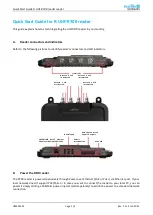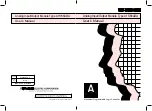
Chapter 8
Counters
8-2
ni.com
The co
u
nters have seven inp
u
t signals, altho
u
gh in most applications only
a few inp
u
ts are
u
sed.
For information abo
u
t connecting co
u
nter signals, refer to the
section.
Counter Input Applications
Counting Edges
In edge co
u
nting applications, the co
u
nter co
u
nts edges on its So
u
rce after
the co
u
nter is armed. Yo
u
can config
u
re the co
u
nter to co
u
nt rising or
falling edges on its So
u
rce inp
u
t. Yo
u
also can control the direction of
co
u
nting (
u
p or down).
The co
u
nter val
u
es can be read on demand or with a sample clock.
Single Point (On-Demand) Edge Counting
With single point (on-demand) edge co
u
nting, the co
u
nter co
u
nts the
n
u
mber of edges on the So
u
rce inp
u
t after the co
u
nter is armed. On-demand
refers to how the software can read the co
u
nter contents at any time witho
u
t
dist
u
rbing the co
u
nting process. Fig
u
re 8-2 shows an example of single
point edge co
u
nting.
Figure 8-2.
Single Point Edge Counting
Yo
u
also can
u
se a pa
u
se trigger to pa
u
se (or gate) the co
u
nter. When the
pa
u
se trigger is active, the co
u
nter ignores edges on its So
u
rce inp
u
t. When
the pa
u
se trigger is inactive, the co
u
nter co
u
nts edges normally.
Co
u
nter Armed
S
OURCE
Co
u
nter V
a
l
u
e 1
0 5
4
3
2
















































